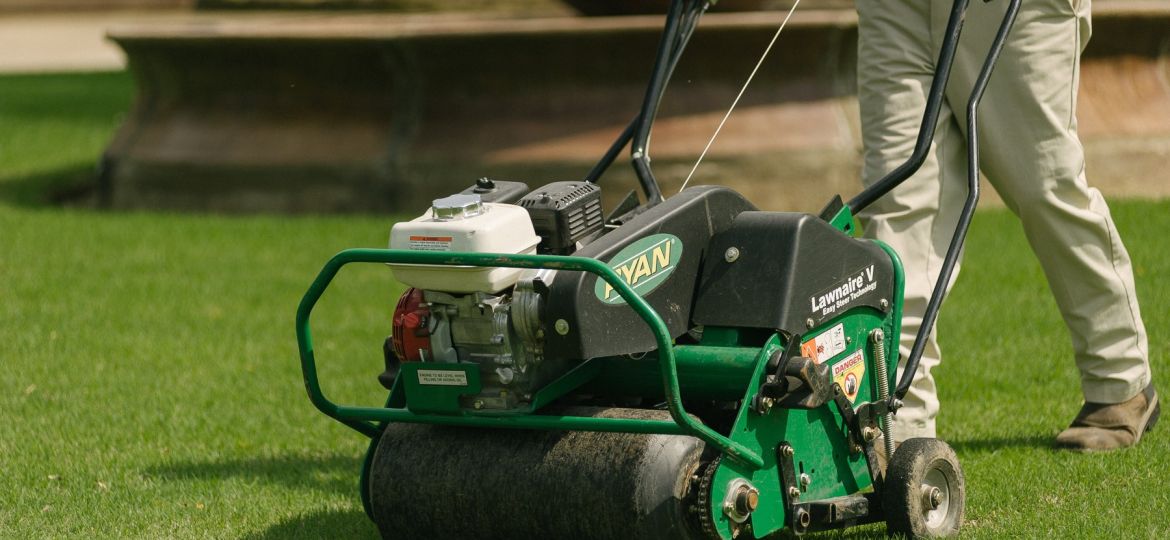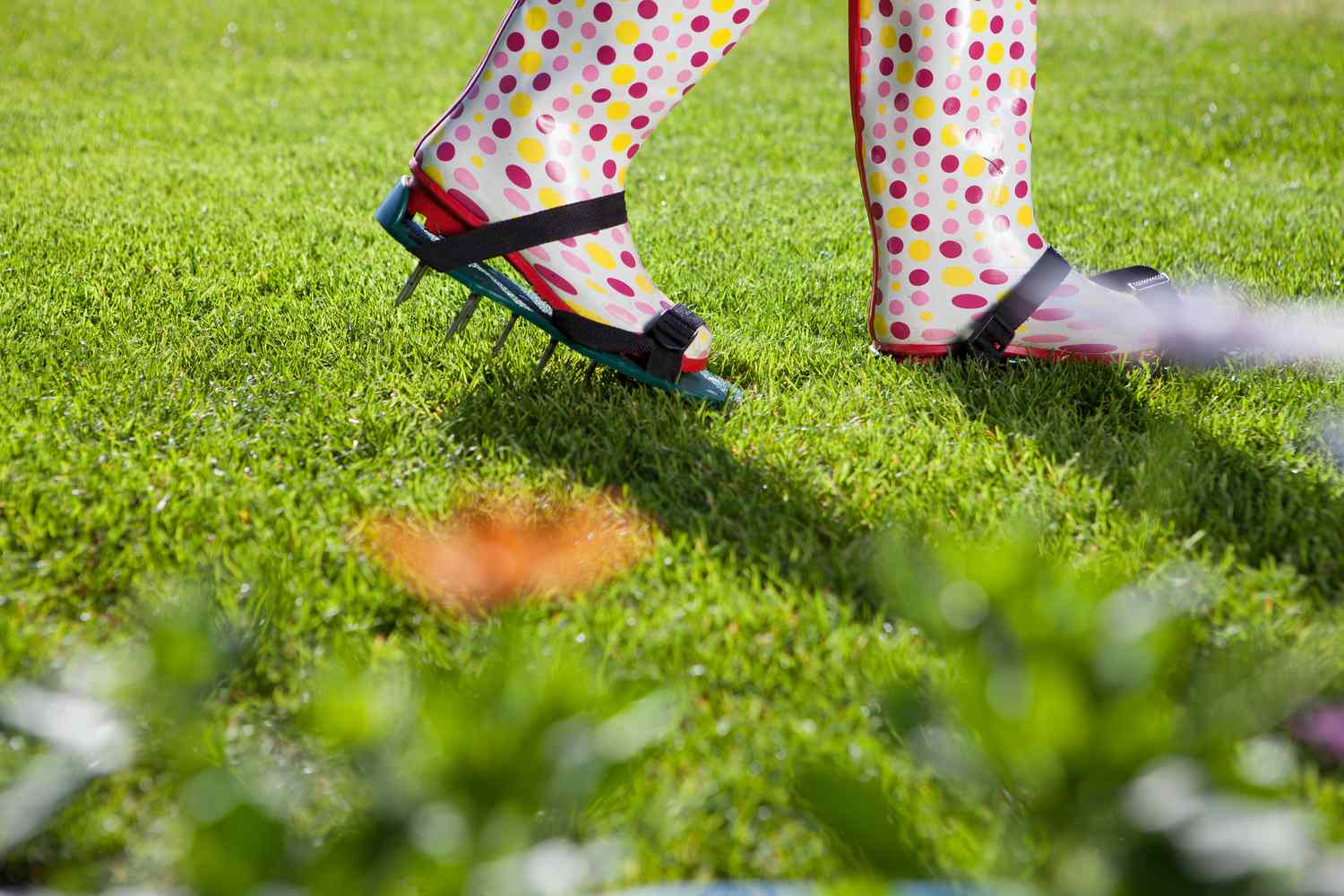
Maintaining a lush, healthy lawn is every homeowner’s dream, especially in a city like Nashville, where the weather conditions can sometimes present challenges. One of the best ways to ensure that your grass grows vibrant and green is by aerating your lawn. Aeration, a process that involves perforating the soil with small holes to allow air, water, and nutrients to reach the grassroots, is a crucial aspect of lawn care. In this comprehensive guide, Landscaping Nashville will provide expert tips on how to aerate your Nashville lawn effectively, ensuring your grass stays healthy all year round.
Why Aeration is Essential for Nashville Lawns
Nashville’s unique climate—hot summers, mild winters, and occasional heavy rains—can take a toll on your lawn. Over time, the soil can become compacted, making it difficult for grass roots to access the air, water, and nutrients they need. This results in thinning grass, patches of dead turf, and an overall unhealthy lawn. Regular aeration helps alleviate compaction, improving the soil structure and promoting a healthier, more robust lawn.
Landscaping Nashville is dedicated to helping Nashville homeowners maintain beautiful, sustainable lawns. With proper aeration, you can enhance your lawn’s resilience, reduce the need for excessive watering, and foster deeper, stronger roots.
What is Lawn Aeration?
Lawn aeration is the process of creating small holes in the soil to allow essential nutrients, water, and oxygen to penetrate deeper into the ground. It promotes healthier grass growth and prevents thatch buildup—a layer of dead grass and debris that can suffocate your lawn. Regular aeration also enhances soil drainage, reduces water runoff, and encourages deeper root systems.
Benefits of Aerating Your Nashville Lawn
The benefits of aeration extend beyond simply helping your lawn look greener. Here are some key reasons why aeration is essential for Nashville lawns:
- Improved Soil Compaction: Heavy foot traffic, frequent mowing, and natural soil settling can lead to compacted soil, restricting root growth. Aeration loosens the soil, allowing roots to expand and absorb nutrients more effectively.
- Enhanced Nutrient Absorption: Aeration ensures that fertilizers and other lawn treatments penetrate deep into the soil, allowing for optimal absorption and improved lawn health.
- Reduced Thatch Accumulation: Thatch buildup can prevent water and nutrients from reaching your lawn’s roots. Aeration breaks up thatch and promotes better absorption of vital resources.
- Healthier Grass Growth: Aeration encourages a stronger, healthier root system, making your lawn more resistant to drought, disease, and pests.
- Improved Water Drainage: Aerating helps water to seep into the ground rather than pooling on the surface, preventing waterlogging and reducing the risk of fungal diseases.
When to Aerate Your Lawn in Nashville
The timing of lawn aeration is crucial to achieving the best results. In Nashville, the best time to aerate depends on the type of grass you have. Nashville lawns are typically composed of cool-season grasses like Kentucky bluegrass and fescue or warm-season grasses such as Bermuda or Zoysia.
Aerating Cool-Season Grasses
For cool-season grasses, aeration is best performed in early fall or spring. The cooler temperatures and increased rainfall during these seasons provide the ideal conditions for grass recovery after aeration. Fall aeration is particularly beneficial, as it gives the grass time to establish strong roots before the hot summer months.
Aerating Warm-Season Grasses
Warm-season grasses thrive in Nashville’s summer heat, so the best time to aerate these lawns is in late spring or early summer. This allows the grass to recover quickly during its peak growing season.
At Landscaping Nashville, we recommend assessing your lawn’s condition and choosing the right time based on the type of grass and weather conditions in your area.
How to Aerate Your Nashville Lawn: A Step-by-Step Guide
Aerating your lawn is a relatively simple process, but doing it correctly will ensure maximum benefits. Follow these expert tips from Landscaping Nashville to aerate your lawn efficiently and effectively.
Step 1: Determine If Your Lawn Needs Aeration
Before you begin, it’s important to assess whether your lawn actually needs aeration. Some signs that your lawn could benefit from aeration include:
- Areas of your lawn that feel hard or compacted
- Water pooling or running off the lawn during rain or irrigation
- Thinning grass or bare patches
- Heavy foot traffic areas, such as pathways or play areas
- Excessive thatch buildup
If you notice any of these signs, it’s time to aerate your lawn. Landscaping Nashville recommends performing a soil test to check for compaction issues, especially if you’re unsure whether your lawn needs aeration.
Step 2: Choose the Right Aeration Equipment
There are two primary types of aeration tools: spike aerators and core aerators.
- Spike Aerators: These tools use solid tines to punch holes into the soil. While spike aerators can help improve airflow to some extent, they may further compact the soil, making them less effective than core aerators.
- Core Aerators: Also known as plug aerators, these machines remove small plugs of soil from the lawn. This method is more effective at relieving compaction and promoting healthy root growth.
Landscaping Nashville recommends using a core aerator for the best results. You can rent these machines from garden centers or hire a professional lawn care service for the task.
Step 3: Prepare Your Lawn for Aeration
Before aerating, mow your lawn to a shorter height than usual, around 1-1.5 inches. This allows the aeration tool to penetrate the soil more effectively. Additionally, watering your lawn 1-2 days prior to aeration will soften the soil and make the process easier.
Be sure to mark any obstacles such as sprinkler heads, shallow irrigation lines, or utility lines to avoid damaging them during aeration.
Step 4: Aerate the Lawn
Using the core aerator, work in straight lines across your lawn, ensuring that you cover the entire area. For heavily compacted areas or high-traffic spots, go over the same section in multiple directions for thorough aeration.
The goal is to remove small plugs of soil approximately 2-3 inches deep and 2-4 inches apart. These plugs will decompose naturally, returning valuable organic matter to your lawn.
Step 5: Post-Aeration Care
After aeration, it’s essential to help your lawn recover and make the most of the newly created soil pores. Follow these post-aeration steps:
- Leave the Plugs: The soil plugs left behind by the core aerator will break down naturally over time. They provide organic material to the lawn and should not be removed.
- Fertilize and Seed: Aeration is the perfect time to apply fertilizer and overseed your lawn. The holes created during aeration allow for better seed-to-soil contact and improve nutrient absorption, giving your lawn a strong start.
- Water Deeply: After aeration, water your lawn deeply to help the grass recover. Deep watering encourages the grass roots to grow deeper, making your lawn more drought-resistant in the future.
- Avoid Heavy Foot Traffic: Give your lawn time to recover by minimizing foot traffic for at least a week after aeration.
Common Aeration Mistakes to Avoid
While aeration is a straightforward process, there are a few common mistakes that can hinder your results. Here are some tips from Landscaping Nashville on what to avoid when aerating your lawn:
- Aerating Too Often: Aerating more than once a year is usually unnecessary and can stress your lawn. Most Nashville lawns only need aeration once a year, though high-traffic areas may require more frequent attention.
- Aerating at the Wrong Time: Aerating during extreme heat or cold can harm your lawn. Make sure to aerate during the growing season for your grass type to allow for proper recovery.
- Overseeding or Fertilizing Without Aeration: Applying seed or fertilizer without aerating may lead to suboptimal results. Aeration creates the perfect environment for new seed growth and fertilizer absorption.
- Using the Wrong Equipment: Spike aerators may seem convenient, but they can actually compact the soil further. Always opt for a core aerator for the best results.
Professional Aeration Services from Landscaping Nashville
While DIY aeration can be effective, many Nashville homeowners choose professional lawn care services to ensure optimal results. Landscaping Nashville offers expert aeration services tailored to Nashville’s unique climate and soil conditions. Our team uses state-of-the-art equipment and has the expertise to ensure that your lawn remains healthy, green, and vibrant throughout the year.
Whether you need seasonal aeration, overseeding, or complete lawn care services, Landscaping Nashville is here to help. Our team of professionals is dedicated to providing the highest quality service and transforming your lawn into a thriving landscape you’ll be proud of.
A Healthy Lawn Starts with Proper Aeration
Aerating your lawn is one of the most effective ways to maintain its health and beauty, especially in a climate like Nashville’s. By following the expert tips from Landscaping Nashville and scheduling regular aeration, you’ll promote deeper root growth, improve nutrient absorption, and create a lush, green lawn that can withstand Nashville’s weather conditions.
If you’re looking for professional lawn care services, including aeration, in Nashville, Landscaping Nashville is ready to help. Contact us today to learn more about how we can enhance the health and appearance of your lawn, ensuring it remains a beautiful and functional part of your home.

